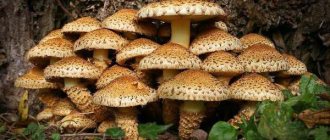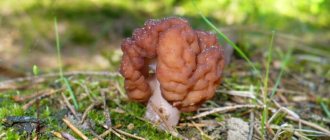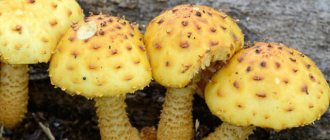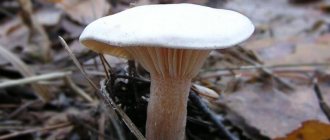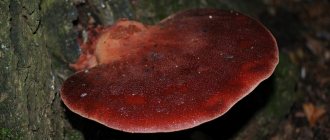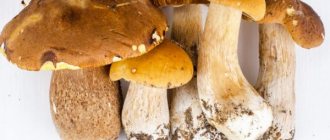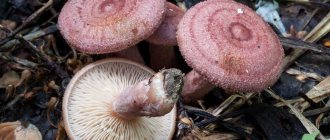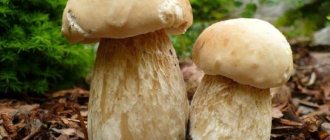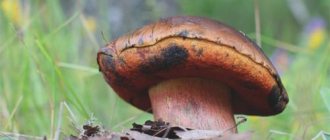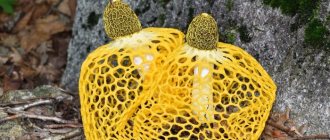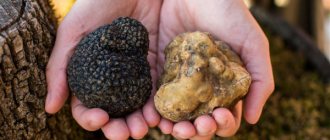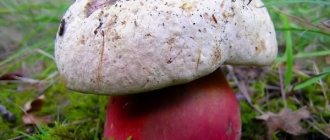Scales (foliota, royal honey fungus, willow) are mushrooms of the strophariaceae family. These bright “prickly” mushrooms decorate the autumn forest. In our country, it is not customary to collect and eat foliots, but in Japan and China they are cultivated on an industrial scale.
These mushrooms are mostly inedible because their pulp has an unpleasant taste and odor. However, those types of mushrooms whose pulp is edible are valued by experienced mushroom pickers and are used by them along with real honey mushrooms.
Botanical description
Content:
- Botanical description
- Types of flakes
- Chemical composition
- Beneficial features
- Use in folk medicine
- Use in cooking
- conclusions
Mushrooms of the genus Squamos are cap-shaped. The caps are hemispherical in young specimens and almost flat in mature ones. Their surface, yellow-brown in color, has a distinctive recognizable feature - protruding scales. It is for this feature that the mushrooms got their name. The diameter of their caps ranges from 5 to 18 cm (depending on the type). The plates on the underside of the caps are thick, adherent, and of different shades of yellow or brown. Spore powder is orange. The pulp of foliota is brown in color, has a bitter taste and smell of radish. Most representatives of this genus are inedible, only a few species are conditionally edible. Mycologists did not find any poisonous specimens among the foliots.
The mushroom stems are tall (up to 12 cm), cylindrical, often narrowing at the base, and painted the same color as the caps. Closer to the cap there is a ring in the form of flakes; below the ring the legs are covered with scales.
These mushrooms grow everywhere on trees and stumps in deciduous forests, forest plantations, and parks. They bear fruit in July-November.
Growing flakes at home
Of all the types of scales, the nameko honey fungus, also known as edible scale, or mucous scale, is the most cultivable. This mushroom is very popular in Asian cooking, especially loved by the Japanese and Chinese, who grow nameko on an industrial scale.
By the way, edible flakes can also be found in our retail chain. Jars of canned mushrooms on the shelves of our supermarkets are very often filled with Nameko honey mushrooms. However, due to the fact that this mushroom is very new to the domestic buyer, marketers prefer not to indicate the name of the canned mushroom, so as not to confuse the timid domestic consumer.
Substrates made from waste from the wood processing industry, as well as some types of agricultural production, are excellent for growing mucous flakes. In other words, the nutrient medium for the development of mycelium and the appearance of fruiting bodies is sawdust (primarily deciduous trees) or chopped straw, to which sunflower husks, wheat bran, chopped corn cobs, etc. are added.
The resulting substrate is sterilized by keeping it at a temperature of about 100°C for 5 hours. For convenience and reliability, it is recommended to form small blocks from the substrate in advance, sterilizing them in this form, and not as a total mass. Then the substrate must be moistened, bringing the humidity to 65-70%.
Mycelium can be purchased either at a gardening store or online. The planting rate is 5% by weight of the substrate. In this case, the mycelium must be planted under sterile conditions and at a temperature not exceeding 30°C.
After this, the substrate is placed in a room (or incubation chamber) with a temperature of about 27°C for 2-3 weeks. At this stage, the flakes do not require lighting, but the air humidity must be maintained at about 80%.
After the specified period, the substrate overgrown with mycelium is transferred to another room, where the air temperature is about 11 ° C and the humidity is at least 98%. At the same time, the substrate needs normal air exchange, so it is no longer possible to keep it in tight bags.
As soon as the first rudiments of fruiting bodies appear on the substrate, their growth should be stimulated by increasing the air temperature by an average of 5°C. You can also reduce the humidity a little - literally by 5-10%. At this stage, you need to provide good lighting for at least 10-12 hours a day.
Having maintained the technology, you can collect mushrooms with a total weight of up to 30% of the weight of the original substrate.
There is an alternative method that imitates the natural conditions in which the scaly mushroom grows. We are talking about solid wood. A stump or a block of deciduous wood is suitable for these purposes. It is best to use aspen, poplar, willow, or birch. Some fruit trees also perform well, for example, walnut, apple, and plum.
The mycelium must be placed in pre-made cuts in the wood. It is recommended to make simple holes using a drill, placing them at a distance of at least 15 cm from each other. The depth of the cuts should be about 4 cm and the diameter no more than 3 cm.
Some amateur mushroom pickers also practice a very unusual method - they split the log lengthwise, pour a thin layer of mycelium into the split, and then, putting the halves together, twist them tightly with wire.
Types of flakes
The genus of scales has about 150 species, of which about 30 grow in the forests of Russia. The most common types are foliots: ordinary, golden, fiery, cinder, alder, gum-bearing, destructive, edible (hint).
Common scalyfoot
This is the most common type. Mushrooms of this type are also called fleecy, scaly, dry. They grow in colonies on the wood of living and rotten deciduous trees. The caps have a diameter of 6-10 cm; in young ones they are hemispherical in shape, in mature ones they are flat. The surface of the caps is pale yellow with pronounced orange-brown scales.
The leg is cylindrical, dense, rusty in color. Young specimens have a veil that breaks when ripe, forming a ring on their stem and flakes along the edges of the cap.
The pulp of this species is fleshy, white or yellow in color, although edible, it tastes bitter.
Golden scale (royal honey mushrooms)
The golden species is one of the largest representatives of foliots: the diameter of the cap can reach 18 cm. Their fruiting bodies are painted in a bright yellow, golden color. The surface of the cap is covered with mucus and small dark brown scales. In young specimens, the cap has a hemispherical shape with tucked edges; in adulthood, it has a saucer shape with a convex center.
The pulp of these foliots does not smell or taste bitter, so the mushroom is classified as edible.
Fire scale
This is an inedible species of foliot. Mushrooms of this species are smaller in size than ordinary or golden ones: the diameter of the caps does not exceed 7 cm. The caps are painted in reddish tones and covered with thick curled scales of a lighter color than the cap. The scales on the cap form a pattern of ovals. The pulp is fleshy, hard, yellow in color, becomes brown when broken, has an astringent bitter taste and an unpleasant odor, so it is not eaten. They bear fruit from mid-July to the end of September.
Cinder flake
Cinder flake is also called coal-loving. The caps of this species of mushrooms are often stained with soot and dirt, since their favorite places to grow are burnt trees and fireplaces. Soot, dust and dirt stick to the mucous surface of the caps, so the mushrooms quickly become dirty yellow or dirty brown. In young foliots, the caps are covered with a private veil; in mature ones, the remains of this veil are preserved in the form of a ring on the stem and along the edges of the cap. The legs are covered with small reddish scales. The pulp of these foliots is dense, hard, light yellow, and has no specific taste or smell. There is no information in the literature about the edibility of these mushrooms. They grow from August to October.
Alder scale
These foliots are also called alder moth. They are often found on stumps and alder or birch wood. The size of the firefly caps is small: does not exceed 5-6 cm. The color of the caps is yellow-orange, along their edge there are flake-like remains of a private blanket. The legs are curved and have a pronounced ring. Below the rings are fibrous, above the rings are smooth.
The pulp of the mushrooms is yellowish, dirty yellow, inedible. If eaten, moths can cause poisoning. They bear fruit in August-September.
Gum scale
These mushrooms are also called yellow-green because their fruiting bodies, covered with scales, range in color from light yellow to yellow-green. The diameter of the caps of gum-bearing foliots is 3-6 cm. The pulp is edible because it does not have the rare taste and smell specific to flakes.
They grow on old stumps and rotten wood of deciduous trees. They bear fruit in August-October.
Destroying scale
These mushrooms are often found on old and dry poplars, so their second name is foliota poplar or poplar. These fungi actively destroy the wood of the tree during their growth. The caps can reach 20 cm, are colored light brown or yellowish, and covered with white scales. The legs are thinned towards the apex and have swellings at the base. The legs match the caps in color and are also covered with scales.
The pulp of destructive foliots is inedible because it has an unpleasant odor and bitter taste. They bear fruit in August-November.
Edible scale
This type of foliot is industrial. Mushrooms of this species are cultivated on a large scale in Japan and China. Their second name is foliota or nameko honey fungus. Grown in rooms with high humidity - 90-95%. They grow in groups. The sizes of these mushrooms are small - no more than 2 cm in diameter. The color of the fruiting bodies is orange-brown, the surface is covered with thick, dense jelly-like mucus.
They have soft flesh, similar in taste and smell to real honey mushrooms. On the shelves of our stores you can often find pickled edible flakes made in China. Only the inscription on the jar says that it is honey mushrooms (the second name for edible scales). Pickled foliots differ from real honey mushrooms by their mucous marinade, which is due to the jelly-like coating of the caps of the latter.
Upland and yellow-greenish scale
Upland scale is an edible agaric fungus that grows in small groups from early August to late September in pine forests, on stumps or roots, and less often on dead wood.
Young mushrooms have a hemispherical cap, while mature mushrooms have a convex, outstretched cap with wavy edges. Its diameter is about 8 cm. The surface of the cap is smooth, shiny, sticky, golden yellow or reddish, acquiring a greenish tint at the edges. The plates are frequent, first yellow and then rusty. The leg is rounded, can end in a short root-like process, straight or curved, hollow inside, about 8 cm high and about 1 cm in diameter. Its surface is smooth, matte, finely scaly, sulfur-yellow at the top, brown at the bottom. The pulp is thin, soft, sulfur-yellow in the cap, rusty-brown in the stem, odorless.
Chemical composition
The pulp of royal honey mushrooms (golden scale) contains the main nutrients:
- proteins - 2.2 g;
- fats - 1.2 g;
- carbohydrates - 5.6 g, of which 5.1 g are dietary fiber.
The low content of carbohydrate substances determines their low calorie content: only 22 kcal per 100 g of mushrooms.
In addition to nutrients, the pulp of these mushrooms contains many vitamins and minerals.
Vitamins and minerals
| Name | Content per 100 g of pulp, milligrams |
| Vitamin B1 (thiamine) | 0,02 |
| Vitamin B2 (riboflavin) | 0,38 |
| Vitamin PP (nicotinic acid) | 10,3 |
| Vitamin C (ascorbic acid) | 11,0 |
| Vitamin E (tocopherol) | 0,1 |
| Potassium | 400,0 |
| Calcium | 5,0 |
| Phosphorus | 45,0 |
| Magnesium | 20,0 |
| Sodium | 5,0 |
| Iron | 0,8 |
In terms of nutritional value, edible foliots belong to the very last (fourth) food category, that is, mushrooms of mediocre taste.
How to cook common flake
The fleecy scale belongs to the 4th group of edibility; a variety of dishes can be prepared from this species. Before cooking, they are washed and boiled for 20 minutes in salted water. Boiled common flakes are used: fried, stewed, as a filling for pies and for preservation for the winter.
Recipes for preparing common flake are available even for a novice housewife.
Boiled mushrooms. To prepare old mushrooms, only the caps are used, since the flesh at the stems is hard and fibrous.
Process:
- The hats are cleaned of dirt and washed thoroughly.
- If the hat is large, it is divided into 4 parts, and the young mushrooms are boiled whole.
- Prepared mushrooms are soaked for 20 minutes in warm water.
- The washed products are placed in a pan and filled with water until it covers them completely.
- After boiling, add salt and reduce heat.
- Cook for 20-30 minutes, periodically removing the foam.
Attention!
Boiled gifts of the forest can be stewed, fried, it makes delicious soup, caviar and filling for pies. Pickled common flake. A delicious preserve for the winter that is quick and easy to prepare. From 1 kg of mushrooms you get 3 half-liter jars.
- The hats are washed. Large ones are divided in half, small specimens are boiled whole.
- The prepared ingredients are poured with salted water and left for half an hour.
- After the time has passed, pour into boiling water and boil in 3 steps for half an hour, changing the water each time.
- Pour 600 ml of water into a separate container, bring to a boil and add salt, sugar and vinegar.
- 5 minutes before the end of cooking, add allspice, cloves, dill seeds and bay leaves.
- The finished dish is transferred to sterilized jars and poured with hot marinade.
- After cooling, the jars are removed to a cool room.
Fried mushrooms. The boiled common flake is transferred to a colander to remove excess liquid. In a frying pan with thick walls, fry onions, cut into half rings, in vegetable oil. After acquiring a golden color, caps or whole specimens are added to the onions. Reduce heat and fry until done. The finished dish is sprinkled with chopped herbs.
The dish prepared according to this recipe can be prepared for the winter. To do this, transfer the fried mushrooms into clean jars and fill them with oil to the brim. The jars are sterilized, closed and stored in the refrigerator.
Important! To improve the taste, it is better to replace vegetable oil with butter.
Beneficial features
The pulp of royal honey mushrooms is good for health, because with its low calorie content it contains the entire spectrum of essential amino acids, and in terms of the amount of phosphorus and calcium it is comparable even to fish fillet.
Due to the presence of iron and magnesium in the pulp, these mushrooms participate in the processes of hematopoiesis, normalize the conduction of impulses along nerve fibers, influence the synthesis of proteins in the human body and are catalysts for various chemical reactions.
Substances exhibiting bactericidal and antifungal effects were found in golden, gum-bearing and edible foliots. The mucus covering the surface of the fruiting bodies of golden and edible scales has the following properties:
- stimulate cerebral circulation;
- increase immunity;
- relieve fatigue;
- restore vitality.
The flakes contain squarrosidine, a unique compound that inhibits the enzyme xanthine oxidase. The enzyme xanthine oxidase promotes the crystallization of uric acid in the joints, kidneys and body tissues. By inhibiting this enzyme, squarrosidine prevents the precipitation of urate salts and thus prevents painful attacks in people with gout. In clinical practice, drugs containing a xanthine oxidase inhibitor as an active substance are used to treat gout.
There is evidence that products made from these mushrooms can exhibit anti-cancer properties.
Doubles and their differences
The appearance of the flake may suggest that it is inedible or even poisonous. It resembles many tubular mushrooms, the appearance of which traditionally should scare off inexperienced mushroom pickers. However, its dark scales are a distinctive feature that sets the mushroom apart from many others.
The only representative of the fungal kingdom with which the squamate can be confused is the common squamate. Adults are almost identical to each other. Both mushrooms are edible, with the only difference being the difference in smell and a slight bitterness in taste.
Possible harm
In addition to its beneficial properties, royal honey mushrooms can also have harmful effects on the human body. Their harm may be due to various factors:
- They belong to the inedible types of flakes.
- Collected in places with unfavorable environmental conditions (near landfills, cattle burial grounds, along roads, in industrial zones).
- They are overripe or wormy.
Eating edible types of flakes is contraindicated in case of individual intolerance and allergies.
With gastritis, pancreatitis, cholecystitis and kidney disorders, taking foliot in food can cause an exacerbation.
Children's age, pregnancy and breastfeeding are also absolute contraindications to eating foliot.
It is strictly forbidden to simultaneously consume royal honey mushrooms and alcoholic beverages. It has been scientifically established that when they are taken simultaneously, disulfiram-like (coprine) syndrome develops.
This syndrome manifests itself in the form of symptoms of acute intoxication with intermediate breakdown products of alcohol:
- rush of blood to the face;
- tinnitus;
- nausea and vomiting;
- abdominal pain;
- increased body temperature;
- rapid heartbeat;
- difficulty breathing;
- panic state.
In severe cases, collapsed states, coma or respiratory arrest may develop.
The pulp of these mushrooms also contains meconic acid, which is a derivative of opium. Therefore, in some cases, when royal honey mushrooms are consumed without prior boiling, psychedelic states may develop, accompanied by auditory and visual hallucinations.
Where and how does it grow
Saprophyte is very common in the northern hemisphere. It can be found in Europe, Asia and some regions of North America. Most often, scale grows in groups on tree trunks. Single specimens are quite rare. Among the trees on which this saprophyte grows are:
- beech;
- birch;
- aspen;
- maple;
- willow;
- Rowan;
- oak;
- alder.
In Russia, the scaly mushroom is represented throughout the middle zone, as well as in areas of temperate deciduous forests. Among the regions where it will not be possible to meet it are the Arctic, the northern European regions, as well as the southern regions - Krasnodar and Stavropol Territories, as well as all the republics of the Northern Caucasus.
Use in folk medicine
Medicinal products (decoctions, infusions, tinctures) are prepared from foliots, which are used by traditional healers in the treatment of diseases of the cardiovascular system (atherosclerosis, arterial hypertension, varicose veins, thrombophlebitis). Iron and magnesium foliot help increase hemoglobin levels, so introducing these mushrooms into the diet will be useful for anemia and thyroid diseases.
Thanks to the large amount of fiber in the pulp, royal honey mushrooms prevent constipation. The presence of squarrosidine in the pulp of royal mushrooms makes them an indispensable food for people suffering from gout. Moth preparations are used in folk medicine as an emetic and laxative.
Due to its low calorie content, royal mushrooms are included in the diet of diabetics, vegetarians and people on a diet. It has been scientifically proven that fresh golden foliot extract inhibits the growth of Ehrlich carcinoma and sarcoma-180 in laboratory mice.
Use in cooking
Only ordinary, golden, gum-bearing foliots and nameko honey mushrooms are used in cooking, because they have pulp with a pleasant smell and a typical mushroom taste, similar to the taste of real honey mushrooms.
These mushrooms can be prepared in different ways:
- add to soups, main courses, baking fillings, sauces and salads;
- fry;
- marinate;
- salt.
It is not customary to dry the flakes.
You should not prepare fresh foliots: they can cause dyspeptic symptoms. Before cooking, royal honey mushrooms must be boiled to avoid these digestive problems. The mushroom broth must be drained.
You can eat the entire fruiting body of the mushroom, but experienced chefs recommend using the caps for hot dishes, and the whole body for pickles and pickling.
Spreading
Fire scale.
The distribution area of fire flake is quite wide, but this fungus is rare. It can be found throughout the forest belt of European Russia, in coniferous or mixed forests. Most often it grows on decaying coniferous wood, on weakened dying trees, and on stumps. As a rule, it grows in single specimens, occasionally in small groups.
The period of active fruiting lasts from July to October.
Common scale.
